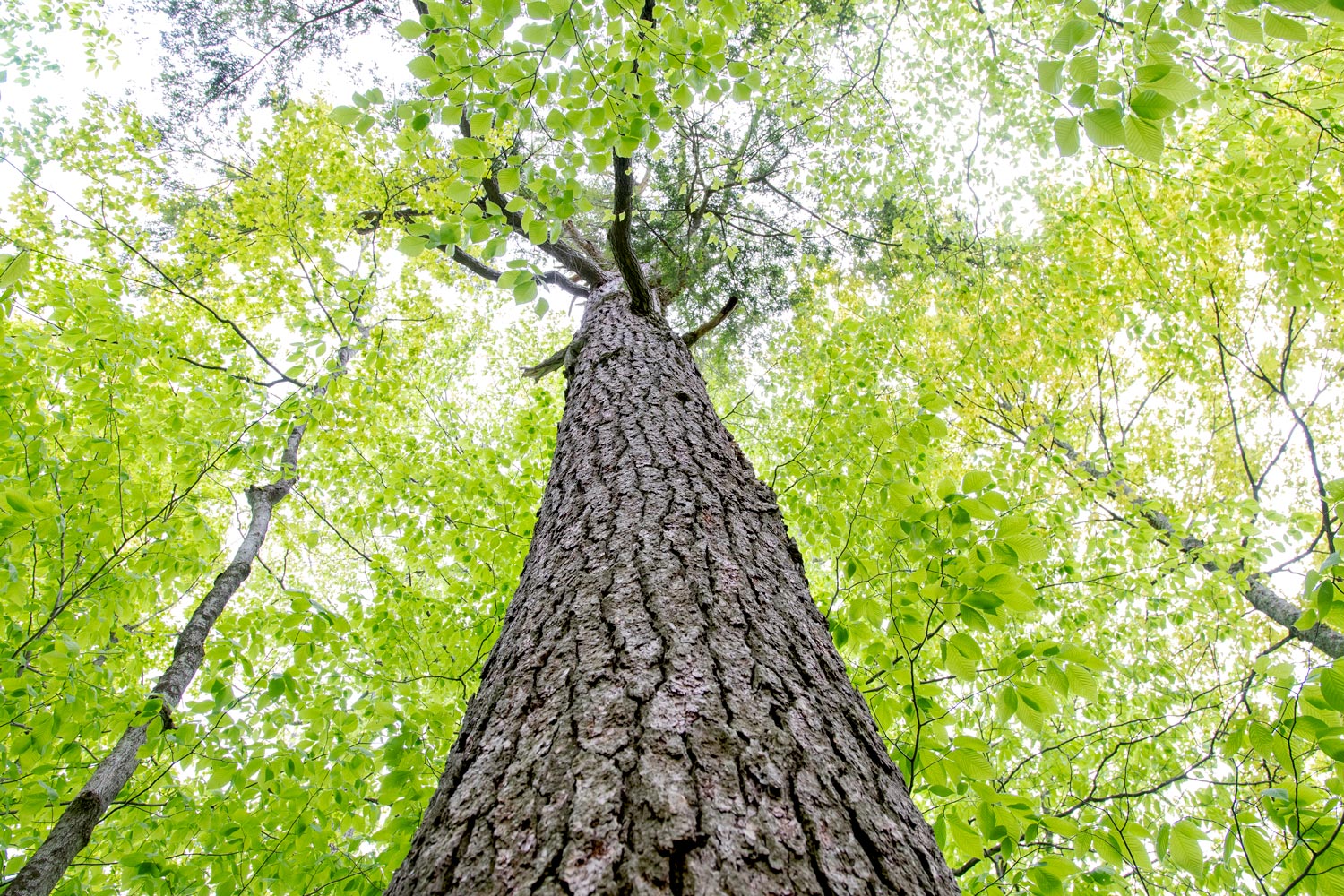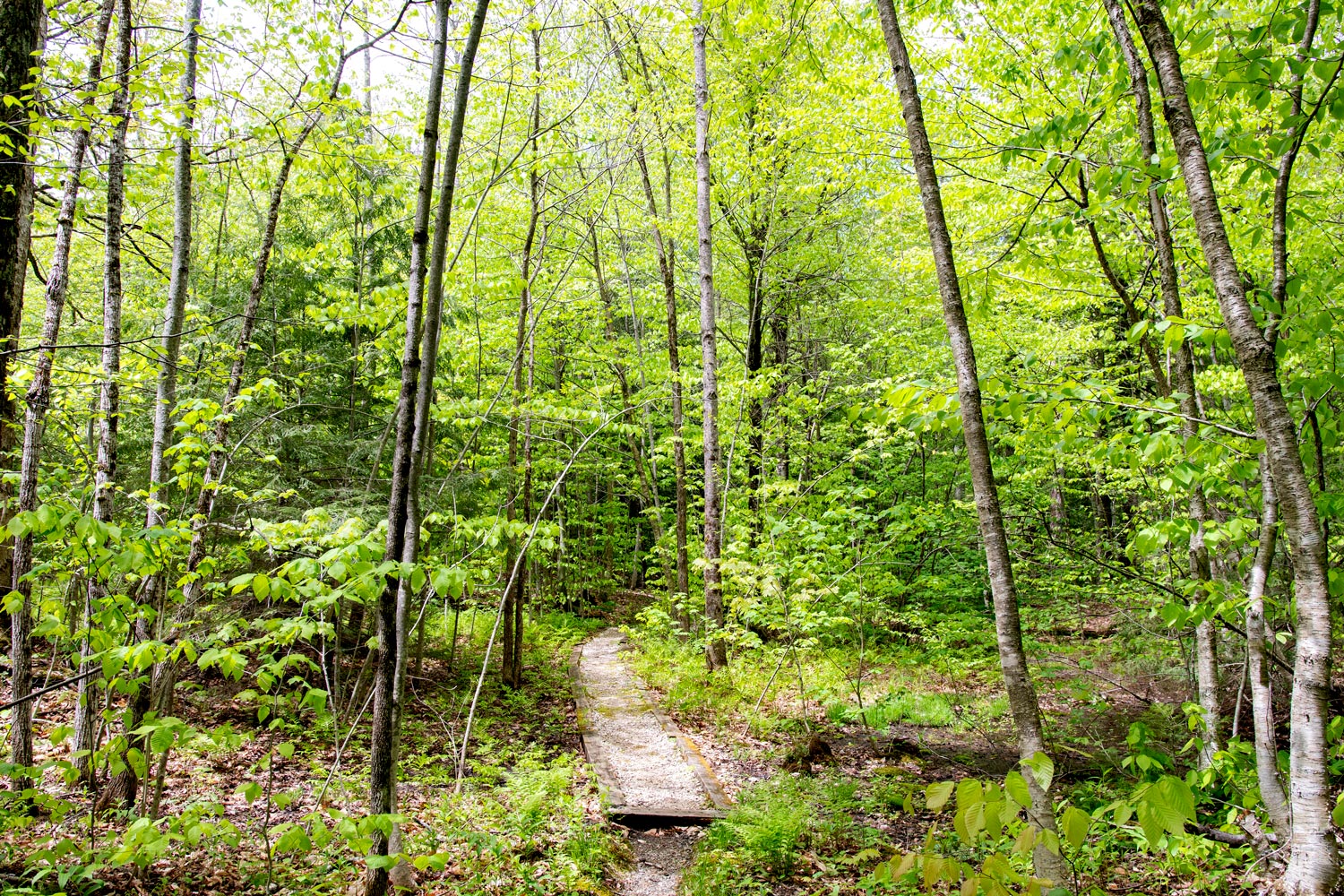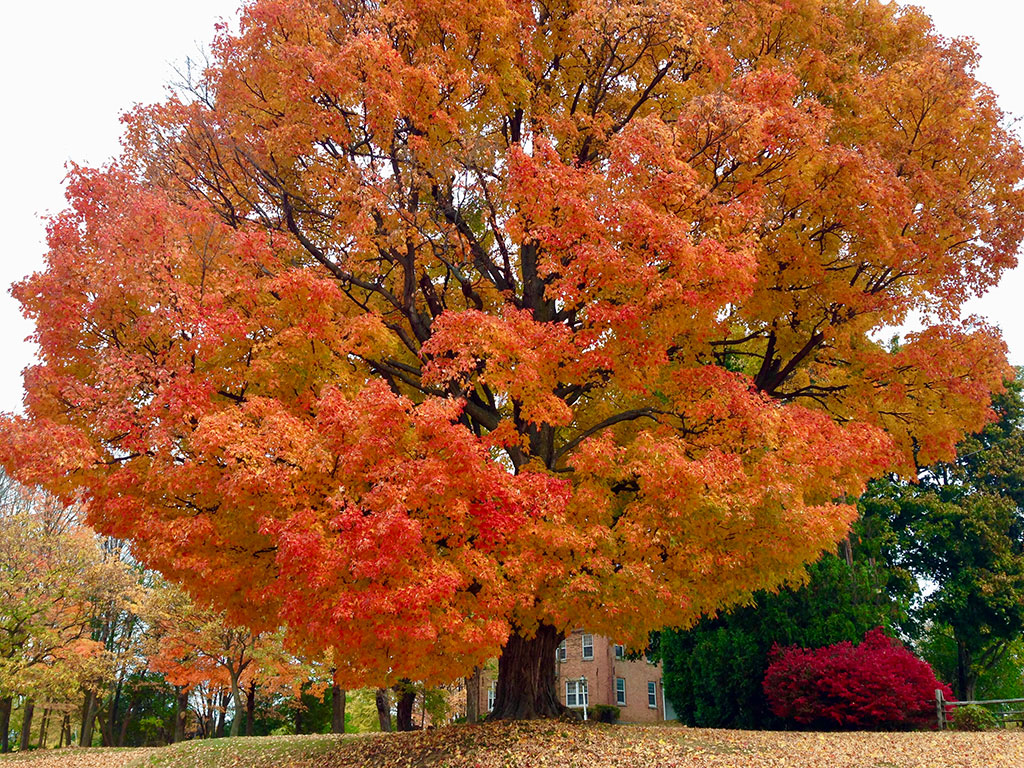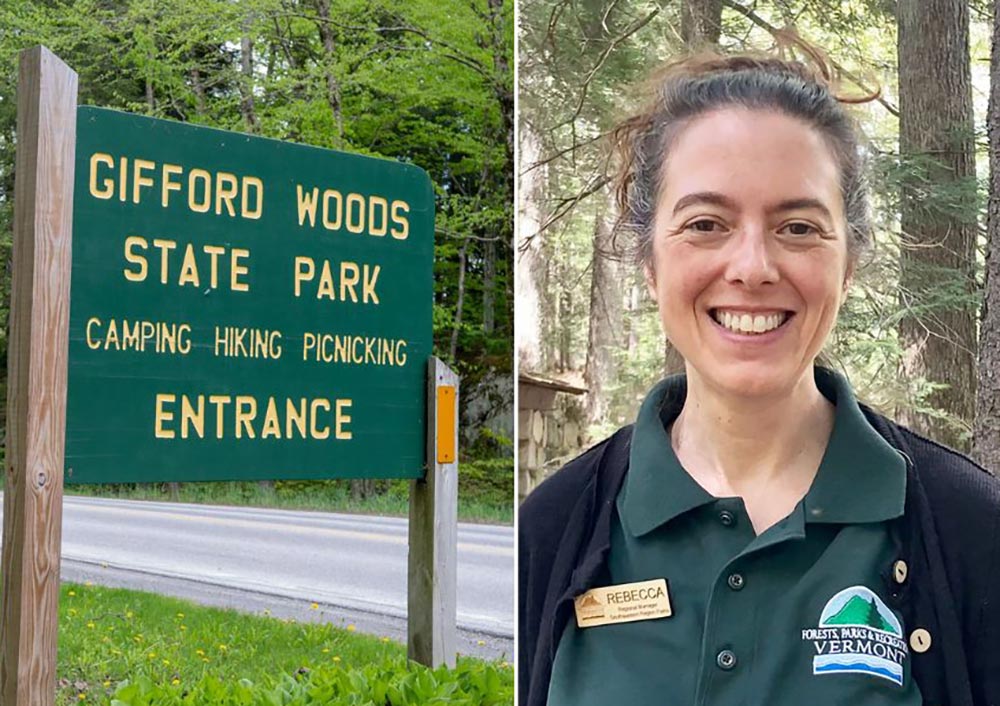
The Wonder of Old Trees at Gifford Woods State Park
May 25, 2023
Listen to the Podcast
It’s hard to imagine, but most of Vermont’s forests and hillsides were clear-cut in the 19th-century. Still, while 80 percent of the state had been deforested, a handful of Vermont’s old forests miraculously survived. Some of those old trees—more than 300 years old—can be seen today at Gifford Woods State Park in Killington.
Gifford Woods State Park, established in the 1930s, contains one of Vermont’s few old-growth hardwood forests. Near the park’s entrance along Route 100, a trail built by the Civilian Conservation Corps—which became an interpretive trail in 2009—meanders through the woods along picnic areas and campsites. The trail showcases a variety of old trees, including an impressive 100-foot-tall Eastern hemlock tree that’s between 300 and 400 years old.
“It’s impossible to see a tree like this and not have it change your heart,” says Vermont State Parks Regional Manager Rebecca Roy, admiring the park’s Eastern Hemlock tree, her favorite at Gifford Woods. “If you look at the bark, it’s thicker and more fissured than any hemlock that you’ve probably ever seen.”

-The interpretive trail showcasing old forest at Gifford Woods State Park was originally built by the Civilian Conservation Corps. Main photo: An Eastern hemlock tree that’s between 300 and 400 years old at Gifford Woods State Park.
Deforestation, Devastation and Regrowth
Vermont’s deforestation in the 19th century wreaked havoc on the state, causing flooding, soil erosion and clouding streams and rivers with silt that killed fish.
Clear-cutting meant that catamounts and wolves disappeared as their natural habitats were destroyed. According to the Vermont Historical Society, deer herds were so depleted that hunting them was illegal from 1865 to 1897.
After a while, the composition of the state’s forest changed as it grew back. The soil exposed by the clear-cuts was warmer than before, which favored the northern hardwoods, including maple trees. Hardwoods also have lighter seeds and produce more of them, giving them an advantage.

-A maple tree during fall foliage season in Charlotte.
According to the 2019 book, Wetland, Woodland, Wildland: A Guide to Natural Communities in Vermont, ecologists who studied the history of Vermont’s forests found that in some areas in the foothills of the Green Mountains, 60 percent of the trees recorded in the late 18th century were beech. By 1962, beech trees comprised only 5 percent of the total forest cover in Vermont.
Meanwhile, before deforestation, sugar maple trees accounted for less than 15 percent of Vermont’s forests. Today, maple trees are abundant in the Green Mountains.
David Dobbs and Richard Ober point out in their 1995 book, The Northern Forest, “The lush, vibrant look of the state today, and the abundance of shimmering deciduous leaves that so pleases tourists in the fall, are partly the product of the clear-cuts of two hundred years ago.”
-To learn more about Vermont’s deforestation, read Mark Bushnell’s excellent VT Digger article, “When the Green Mountains were not so green.”
Happy Vermont Podcast

In this episode, Erica Houskeeper talks to Rebecca Roy, a Vermont State Parks regional manager, about Vermont’s old forests, why old trees are special, and what trees visitors can find on the interpretive trail at Gifford Woods State Park.
She also points out that a separate state-designated natural area at Gifford Woods includes a section of old forest that is off-limits to the public, but the park’s interpretive trail is where visitors can see some old trees up close. Visit vtstateparks.com/gifford for more information.
Support Happy Vermont on Patreon
Find Vermont Events on Happy Vermont




No Comments